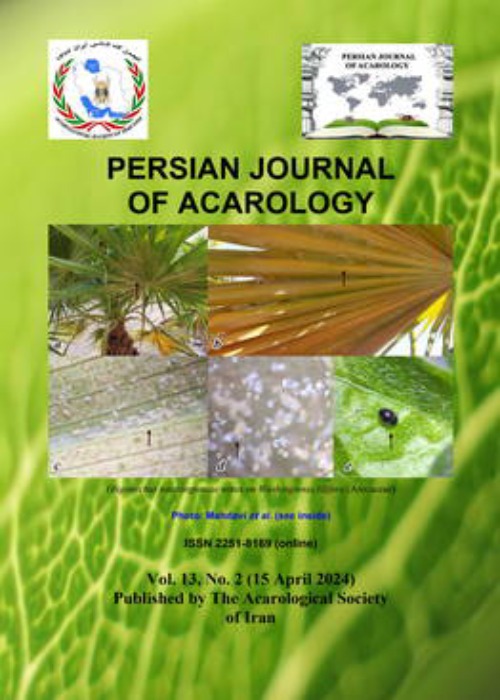Potential volatiles emitted from jasmine plants infested by Tetranychus urticae (Acari: Tetranychidae) and its attraction to predatory Scolothrips sexmaculatus (Thysanoptera: Thripidae)
Herbivore-induced volatiles were extracted from fresh healthy jasmine plants (Jasminum sambac L.) and infested jasmine plants damaged by two-spotted spider mite, Tetranychus urticae and analyzed through Gas Chromatography-Mass spectrometry (GC-MS) to determine volatile hydrocarbon profile in them. Further, olfactometer behavioral bioassay was conducted to investigate the preference of the predator, Scolothrips sexmaculatus to the emitted volatiles. The results revealed that both the healthy and plants infested with two-spotted mites had emitted organic volatile compounds (VOC's) numbering 19 and 31 respectively and some compounds were detected twice or even thrice. The variation in the volatile constituents of healthy and damaged plants clearly depicts the emission of volatiles responsible for attracting beneficials witnessing tritrophic interactions in jasmine ecosystem. The mite infested plants emanated potential natural enemy attractants such as ally isothocyanate, styrene, naphthalene, Bis (2-ethylhexyl) phthalate and several other organic compounds. The compound allyl isothiocyanate was detected in two spotted mite infested jasmine extracts at 4.307 mts in a peak area of 1664139 mm2. Allyl isothiocyanate serves the plant as a defense against herbivores; since it is harmful to the plant. Bis (2-ethylhexyl) phthalate, a six-carbon compound was detected due to herbivory of mite infested plants in a peak area of 4112779391 mm2 implying its maximum presence. Dicacodyl phthalate, another compound, was detected in a peak area of 20400249 mm2 at 30.97 mins. The healthy jasmine plants emanated natural enemy attractants, linalool, methyl salicylate and alpha-farnesene, aside from other volatile organic compounds. In the olfactometer behavioural bioassay studies, maximum number of released mite predator, S. sexmaculatus, oriented on mite infested jasmine plant volatiles (18.5 nos), and healthy plant volatiles (5.5 nos). The volatile organic compounds detected in enormous quantities in mite infested jasmine plants is a positive cue for commercial preparation of artificial lures to attract mite natural enemies in jasmine ecosystem. The predatory thrips lured to mite infested volatiles enrolls an encouraging sign to be exploited in integrated management of mites to enhance the efficacy of potential natural enemies of two-spotted spider mites.
- حق عضویت دریافتی صرف حمایت از نشریات عضو و نگهداری، تکمیل و توسعه مگیران میشود.
- پرداخت حق اشتراک و دانلود مقالات اجازه بازنشر آن در سایر رسانههای چاپی و دیجیتال را به کاربر نمیدهد.


